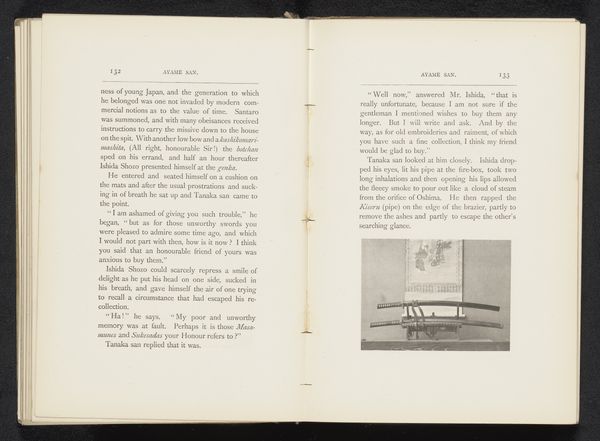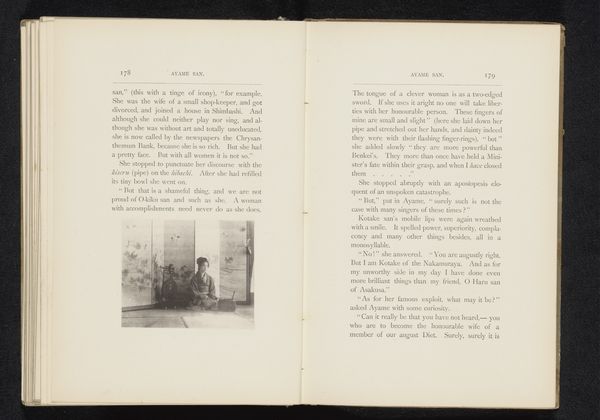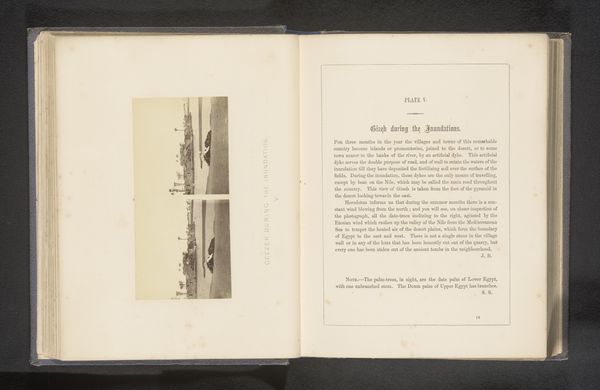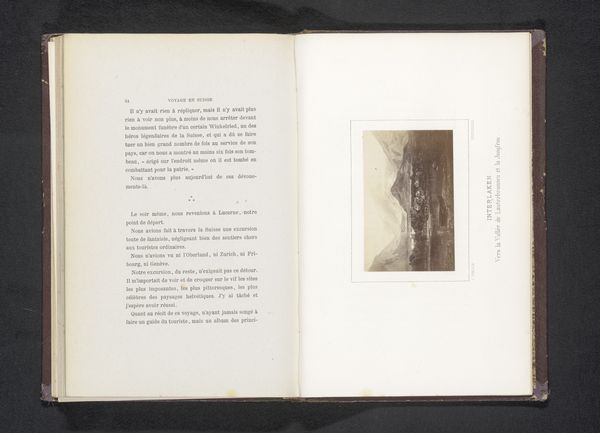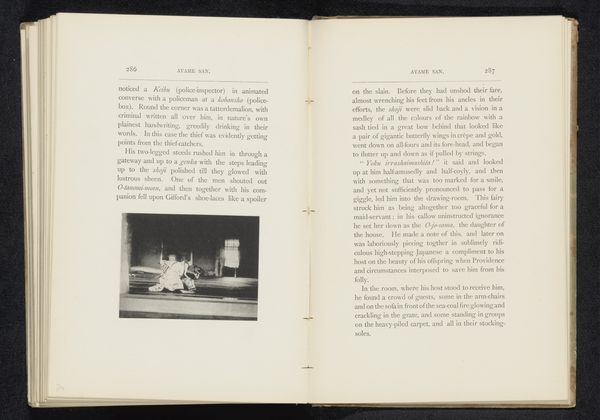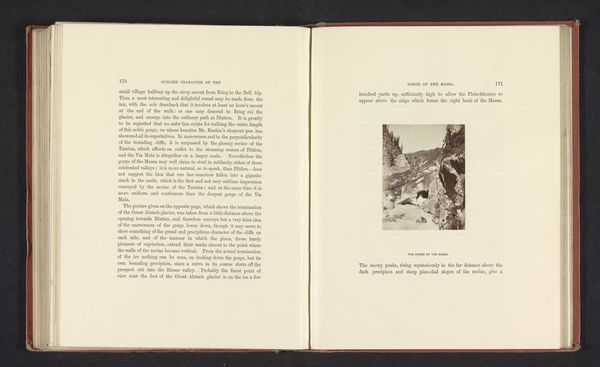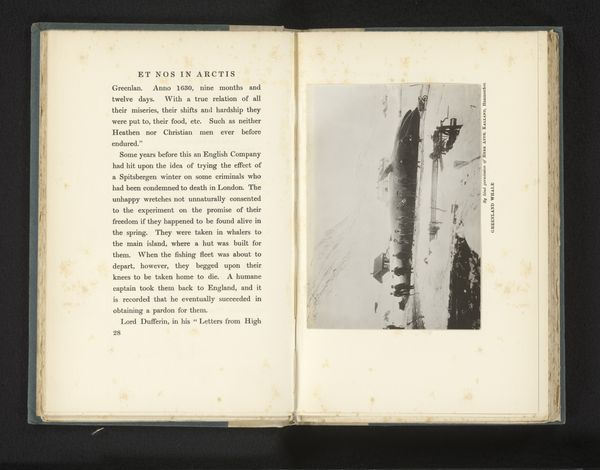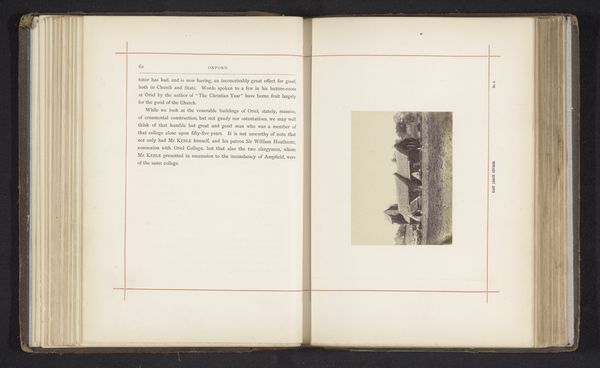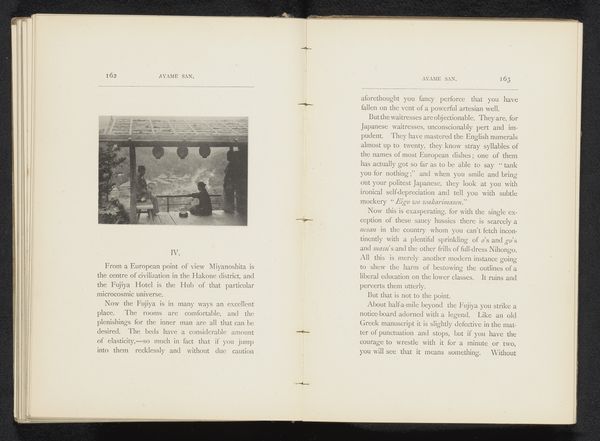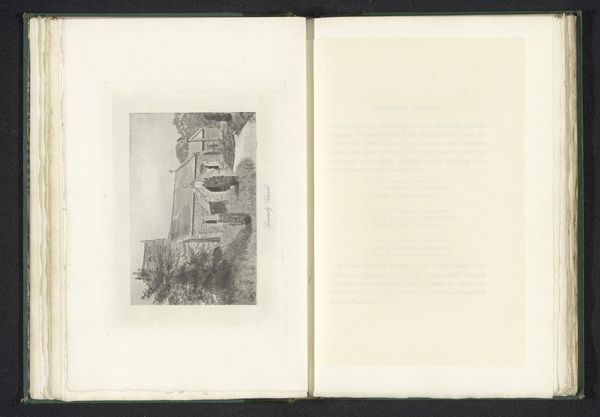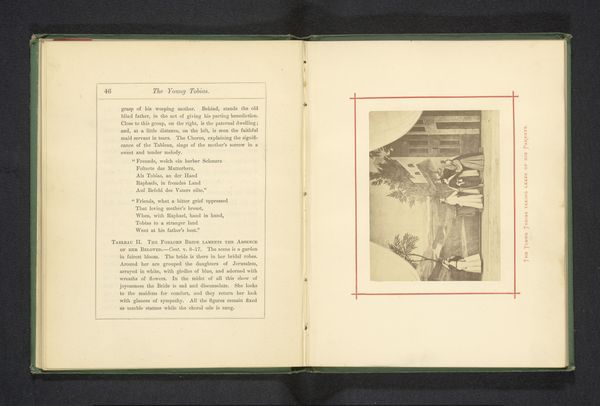
photography, gelatin-silver-print
#
script typeface
#
aged paper
#
script typography
#
hand drawn type
#
personal journal design
#
photography
#
personal sketchbook
#
hand-drawn typeface
#
gelatin-silver-print
#
thick font
#
handwritten font
#
historical font
Dimensions: height 64 mm, width 83 mm
Copyright: Rijks Museum: Open Domain
Curator: What immediately strikes me about this albumen print is its quiet intimacy; the soft tones lend a dreamlike quality to the scene. Editor: This is "Vrouw op een balkon in een stad te Japan," a photograph captured by William Kinnimond Burton sometime before 1892. We're looking at an image of an open book. The left page displays both text and a small, inset gelatin-silver print of a woman standing on a balcony. The page on the right side presents only typography and some faint spotting. Curator: Japonisme certainly comes to mind. Burton’s choice of subject—a woman framed within the architecture of what seems to be a traditional Japanese home overlooking the cityscape—reflects that era’s Western fascination with Japanese aesthetics. Do you feel this piece reproduces some exoticizing gaze of that era? Editor: It does carry those burdens, absolutely. As photography developed, it quickly became a tool of colonial projects and various power dynamics. Burton, as a Scottish engineer and photographer working in Japan, occupied a very specific position. But his work also offers insights into the cross-cultural dialogues and aesthetic exchanges of the late 19th century. His personal project exists as an intimate reflection of his engagement with Japan at this moment of transition. Curator: Absolutely. And look closely at the photograph's placement within the larger design of the book; It is almost like a snapshot lifted from a personal sketchbook, an individual moment memorialized amid a broader, unfolding narrative of typography and text. That personal lens gives it a particularly human feeling, resisting a one-dimensional projection. Editor: I agree, that inset adds another layer, offering space for introspection. Examining this work makes us confront the complexities of historical interpretation. Curator: It certainly pushes me to consider the various narratives we tell, the power dynamics at play when looking, and, moreover, to really ask critical questions of our own contemporary positioning.
Comments
No comments
Be the first to comment and join the conversation on the ultimate creative platform.


